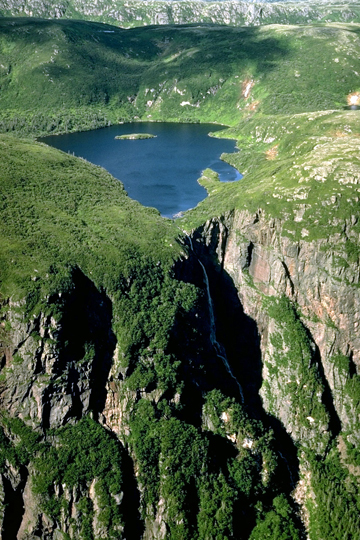Gros Morne << grohs mawrn >> National Park in eastern Canada, is a protected area noted for its geological diversity. It covers 446,000 acres (180,500 hectares) of land on the western coast of the island of Newfoundland, in the province of Newfoundland and Labrador. The Gulf of St. Lawrence lies directly west of the park.

Gros Morne National Park has a varied landscape. Coastal lowlands—with beaches, bogs, cliffs, fiords (long, narrow inlets), and forests—make up the western part of the park. The ancient Long Range Mountains stand in the east. Unusual red-orange mountains known as the Tablelands rise in the south. They were formed from the deep mantle layer of Earth. Valleys carved by glaciers also occur throughout Gros Morne. Bonne Bay, a fiord with two long arms, extends into the park from the Gulf of St. Lawrence.
Animals that live in Gros Morne National Park include Arctic and snowshoe hares, martens, moose, red foxes, red squirrels, and woodland caribou. Birds in the park include common and Arctic terns, rock ptarmigans, and harlequin ducks.
Popular activities at Gros Morne National Park include hiking, boat tours, cross-country skiing, kayaking, picnicking, and swimming. The park offers educational programs during the summer. The Discovery Centre has exhibits on the park’s natural and cultural heritage. Communities near the park offer a wide range of services for tourists.
The government of Canada established Gros Morne National Park in 1973. In 1987, the United Nations Educational, Scientific and Cultural Organization (UNESCO) declared the park a World Heritage Site because of its interesting geological features (see World Heritage List ).
